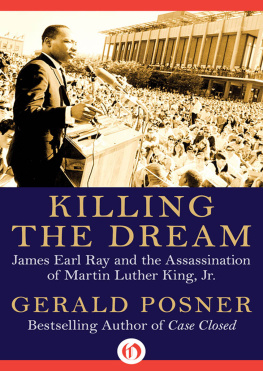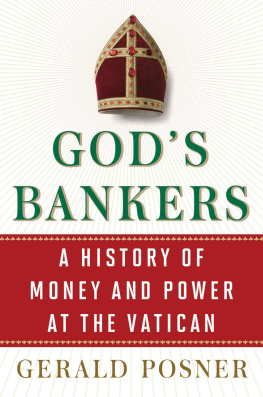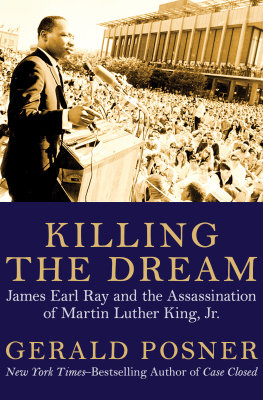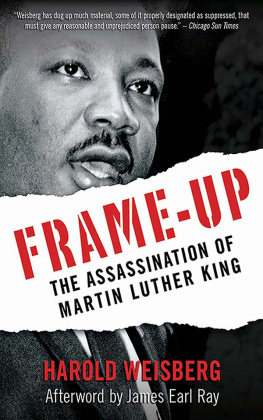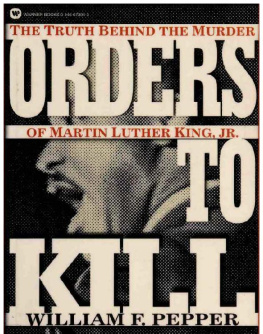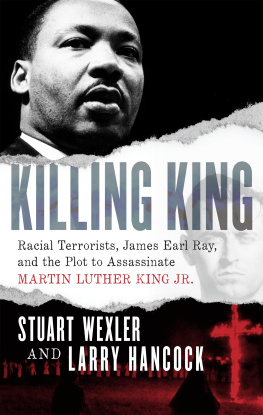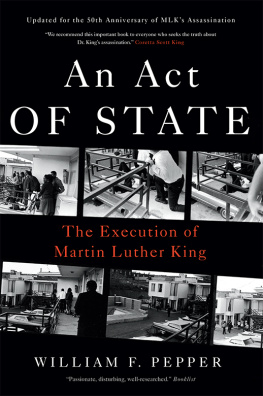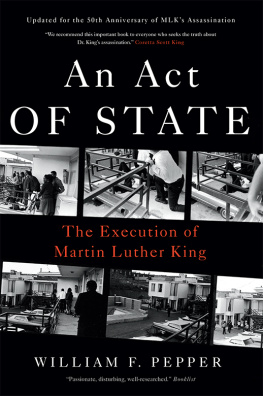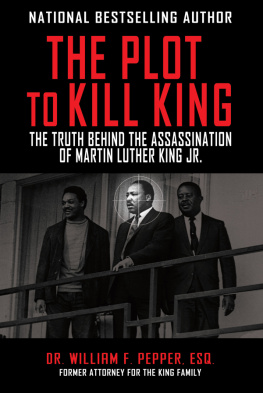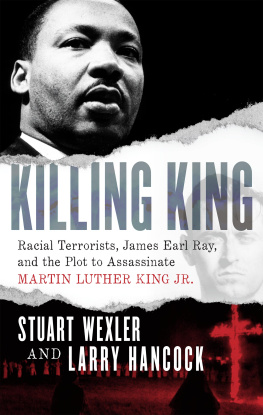Gerald Posner - Killing the Dream : James Earl Ray and the Assassination of Martin Luther King, Jr.
Here you can read online Gerald Posner - Killing the Dream : James Earl Ray and the Assassination of Martin Luther King, Jr. full text of the book (entire story) in english for free. Download pdf and epub, get meaning, cover and reviews about this ebook. year: 1998, publisher: Random House, genre: History. Description of the work, (preface) as well as reviews are available. Best literature library LitArk.com created for fans of good reading and offers a wide selection of genres:
Romance novel
Science fiction
Adventure
Detective
Science
History
Home and family
Prose
Art
Politics
Computer
Non-fiction
Religion
Business
Children
Humor
Choose a favorite category and find really read worthwhile books. Enjoy immersion in the world of imagination, feel the emotions of the characters or learn something new for yourself, make an fascinating discovery.
- Book:Killing the Dream : James Earl Ray and the Assassination of Martin Luther King, Jr.
- Author:
- Publisher:Random House
- Genre:
- Year:1998
- Rating:4 / 5
- Favourites:Add to favourites
- Your mark:
Killing the Dream : James Earl Ray and the Assassination of Martin Luther King, Jr.: summary, description and annotation
We offer to read an annotation, description, summary or preface (depends on what the author of the book "Killing the Dream : James Earl Ray and the Assassination of Martin Luther King, Jr." wrote himself). If you haven't found the necessary information about the book — write in the comments, we will try to find it.
Killing the Dream untangles the cases leading puzzles:
* Was there a mysterious person called Raoul who directed James Earl Ray in the year leading up to the murder?
* Was the fatal shot fired from the bathroom window of a Memphis flophouse, or from a snipers perch hidden in a densely overgrown garden across from Kings hotel?
* Did the military have a covert team of snipers in Memphis on the day King was killed?
* Has the recent confession by a restaurant owner exposed a wide conspiracy leading to a New Orleans crime family?
* Was James Earl Ray a patsy, as the King family recently declared?
At the heart of this study is an in-depth profile of James Earl Ray himself, a fascinating portrait of a career criminal from one of the most forsaken parts of poor white America. By studying Rays often bizarre life--from his hard childhood to his recent attempts to win a new trial and freedom from prison--Gerald Posner clears away years of misinformation. Killing the Dream follows Ray from his pro-Nazi leanings in the U.S. Army, through his many crimes, to Kings murder and beyond, detailing his dealing in and abuse of drugs, his desire to dabble in the porn business, and his obsession with making a quick profit, by any means. Posner re-creates the memorable dramas of the case: Dr. Kings rousing mountaintop speech the night before he was killed; the chilling moments of the assassination; the FBIs far-ranging manhunt for the missing assassin; Rays frantic flight across four countries as he tried to escape justice; the shock in the courtroom when Ray suddenly pled guilty and the truth in the case seemed forever lost.
Killing the Dream lays to rest three decades of conjecture and distortion--much of it spawned by Rays frequently changing stories--to make the case for what happened in Memphis in 1968, and what most certainly did not. This groundbreaking book finally unveils the simple truth of the last great political murder mystery left from the 1960s. In this compelling account of the death of Martin Luther King, Jr., Gerald Posner thwarts James Earl Rays determined efforts to take his secrets to the grave.
Gerald Posner: author's other books
Who wrote Killing the Dream : James Earl Ray and the Assassination of Martin Luther King, Jr.? Find out the surname, the name of the author of the book and a list of all author's works by series.

